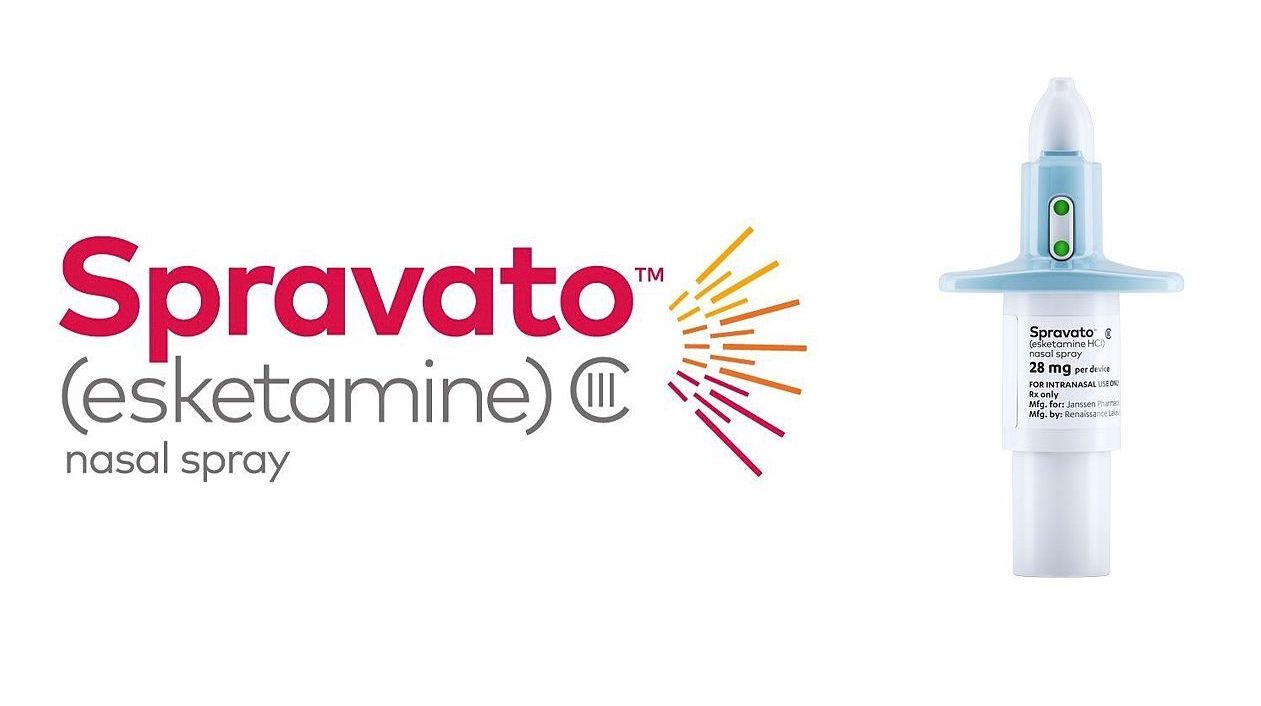Spravato (Esketamine)
Treatment
Fda-approved Spravato for treatment-resistant depression
Spravato (esketamine) is the only prescription nasal spray for adults with treatment-resistant depression or symptoms of major depressive disorder (MDD), taken alongside an oral antidepressant.
Treatment-resistant depression (TRD) is defined as not having experienced sufficient relief from two or more antidepressants.

How Effective is spravato?
Clinical studies found that:
Participants with treatment-resistant depression who took Spravato plus an oral antidepressant had a reduction in depressive symptoms at four weeks compared to those who received a placebo plus an oral antidepressant.
Who is Spravato For?
Spravato is Prescribed for Adults Who
- Have treatment-resistant depression (defined as not having experienced sufficient relief from two or more antidepressants)
Treatment with Spravato or esketamine may be recommended if you’re unable to receive transcranial magnetic stimulation (TMS) due to a metal implant in your head or another condition that can make TMS unsuitable for a patient.
Is It Covered by Insurance?
Spravato is covered by most insurance plans. Active Path Mental Health is in-network with most major commercial insurance plans and will help with the insurance process and advocate for patients.
A Janssen CarePath Coordinator can explain potential out-of-pocket costs and identify cost support options that may help with managing your out-of-pocket costs — whether you have commercial or private health insurance or Medicare or Medicaid.
What does the treatment look like?
Spravato is only approved for use at a REMS-certified treatment center. You take the nasal spray yourself, while a healthcare provider supervises you. For the first four weeks of treatment, Spravato is administered twice weekly, followed by once weekly for the next month. After the first eight weeks of treatment, your provider may further decrease your dosage if appropriate.
Because there’s a risk of sedation and dissociation, you must be monitored for at least two hours after receiving a dose. A caregiver or family member must drive you home after your appointment.
What are the possible side effects?
The most common side effects of Spravato when taken alongside an anti-depressant include:
- Feeling detached from yourself, your emotions, thoughts, and the environment around you
- Increased blood pressure
- Sleepiness (sedation)
If you experience these or other side effects, they are most likely to happen immediately after you take Spravato and go away the same day.
Your healthcare provider will discuss side effects in more detail during your evaluation.
Are There Any Contraindications?
Do not take Spravato if you:
- Have aneurysmal vascular disease in various parts of your body, such as your brain, chest, abdominal aorta, or arms and legs
- Have an irregular link between your arteries and veins, known as arteriovenous malformation
- Have a history of cerebral hemorrhage (bleeding in your brain)
- Are allergic to esketamine, ketamine or other ingredients in Spravato
How to Get Started
If you would like the schedule a free consultation in order to learn more about Spravato or our other services, please fill out our form below. Someone from our clinics will help connect you within one business day.
